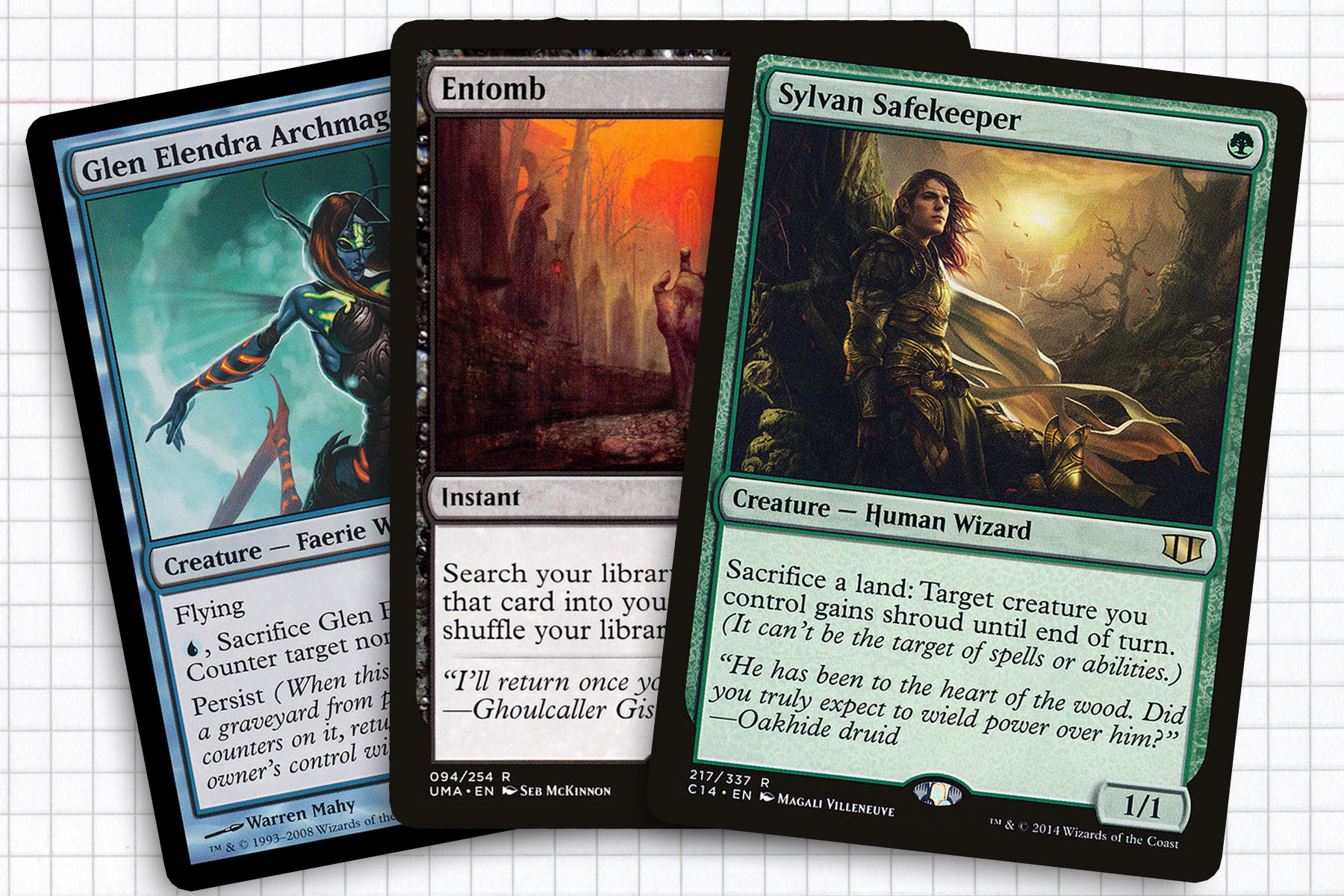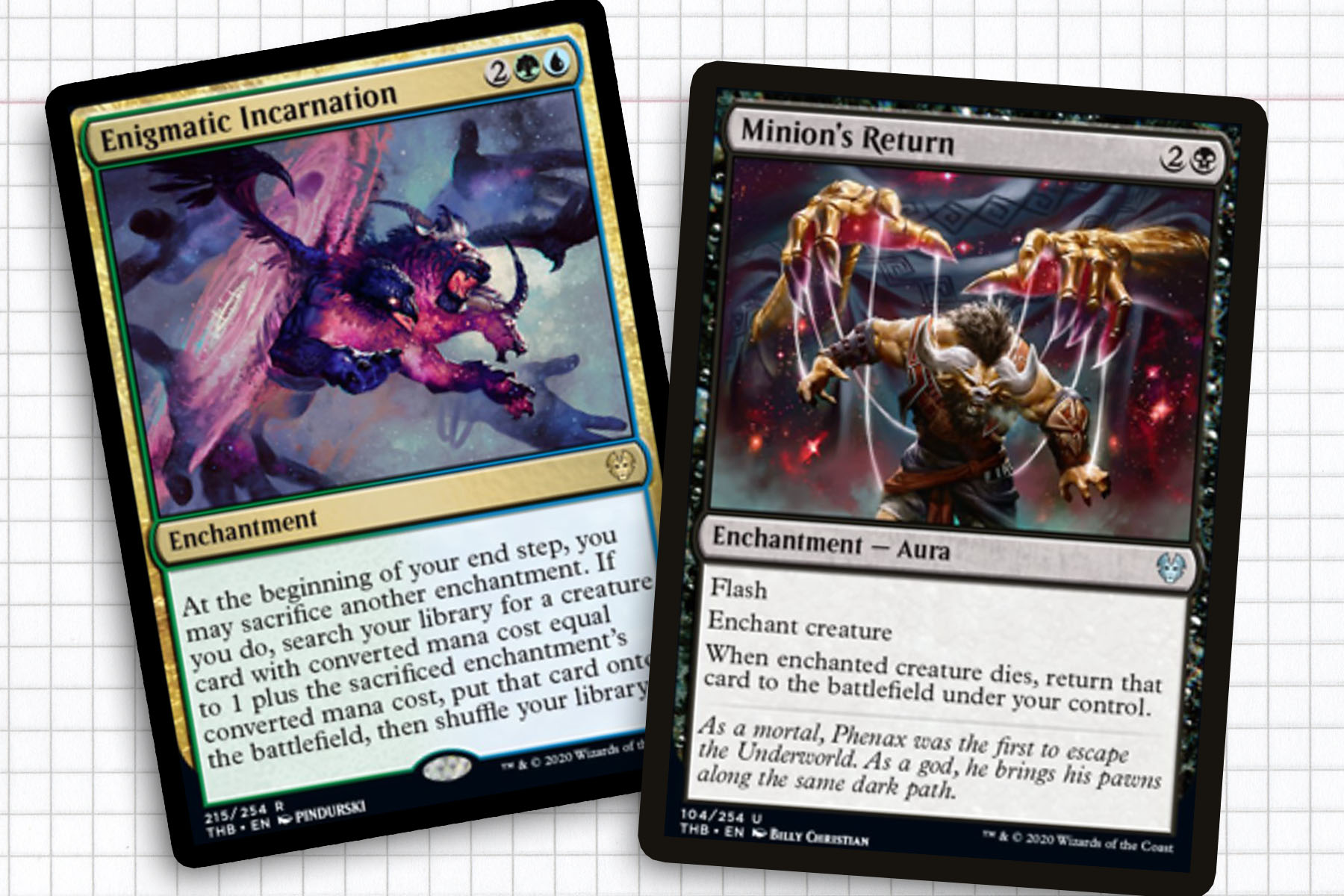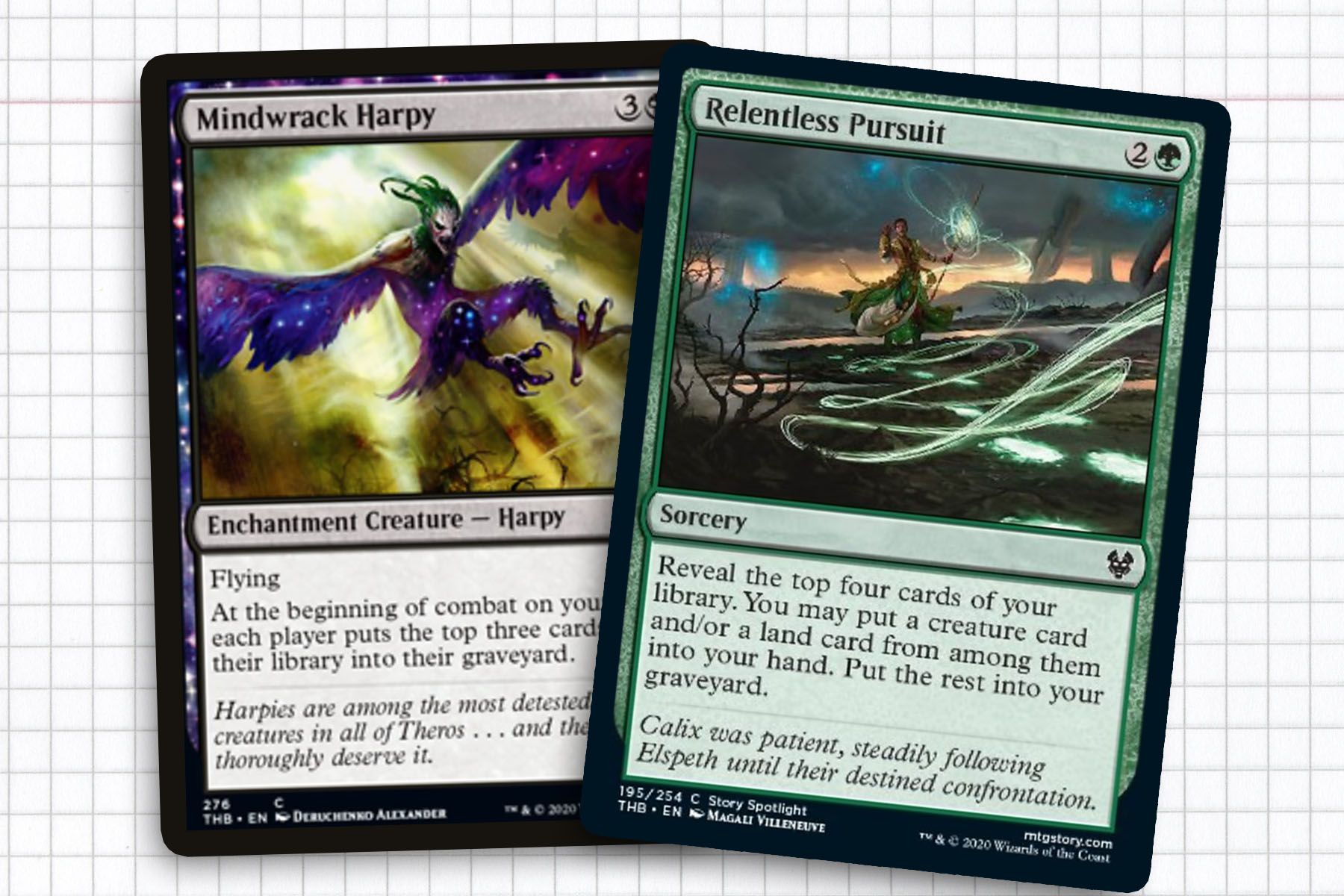With each prerelease, I find myself looking out for cards I hope to nab in my Sealed pool that I think I will get some use out of in Commander. As Theros Beyond Death was being previewed, one of the most frequent thoughts I had was “this seems like it would work well in a Muldrotha, the Gravetide deck.” Now that the set has been revealed to us in full and I have had some time to take it in; I would contend that while likely not intended, Wizards had given us a lot of solid pieces for a starter Muldrotha deck.
Admittedly, I’ve wanted to build around her in the past, but never committed to it. But this spark of inspiration has occupied my mind for the better part of the last three weeks, which means there must be something here. That is why today I will be looking at this potent deck and highlighting valuable pieces to look out for this weekend, so you too can start developing your own spin on this deck.

Understanding Sultai
Sultai is considered by many to be the best color combination in Commander. With the ramp of green, control elements of blue, and “everything, at a cost” nature of black, the wedge can cover a lot of bases and outlast the rest of the table very easily. Of the available options, Muldrotha, the Gravetide ascended to the top of popularity for the wedge very quickly as a powerful tool box deck that can be equipped with whatever your meta calls for. Due to this versatility, Muldrotha has become a general that’s attractive to competitive players that may normally be keen on sanctioned Magic but also want to invest in at least one Commander deck.
The typical Muldrotha deck will pack Commander stalwarts like Acidic Slime, Mulldrifter, and Sidisi, Undead Vizier to act as removal, card advantage, and tutoring respectively. But the catch here is that because of the general’s ability allowing you to play up to one permanent card of each type from your graveyard each turn, it means that you can have access to these advantages on just about any turn.
Even more backbreaking, Muldrotha can swap out Fog for Spore Frog, Negate for Glen Elendra Archmage, and Harrow for Springbloom Druid; meaning that the control and ramp elements are no longer spell-based either. The fun doesn’t stop there, as Nevinyrral’s Disk becomes a repeatable Planar Cleansing, Nihil Spellbomb keeps graveyards clean, and Elixir of Immortality stands in for a card I’d like to see more of, Reminisce. What I’m trying to say is, this deck very strong for good reason.
But what if you are a Standard player, whose collection only goes back to Kaladesh? This is where recognizing substitute options for a deck that also happen to be in-print cards can be so valuable. By identifying some stand-in cards, we can assemble a workable deck that help to enlighten a player to if this deck will be for them, before investing the time and energy to build the fully powered version.

A Few Good Surrogates
The first step in analyzing any prospective cards, we first need to understand what the deck wants that it might not already have. I asked the most experienced Muldrotha player I know, Erin Campbell, about what this set offered; her consensus was that Gravebreaker Lamia is the sole auto-include. And I was very happy I asked; because despite how perfect it is, I swear I would have overlooked this card if I hadn’t.
To my amateur eyes, one piece that’s often missing from most Muldrotha lists is a Control Magic effect. The omission makes sense however, because these kinds of spells normally end up being too expensive and slow to make meaningful gains on the board. That’s where Minion’s Return comes into focus. As a False Demise that can be cast in response to a mass removal spell—even from the graveyard—Minion’s Return can keep threats out of our opponent’s hands and under our safe guidance. And of course, like a trusty Path to Exile, we can always aim it at our own creatures for utility.
To be clear, Atris, Oracle of Half-Truths is not Fact or Fiction; but they are a close approximation and something that can be recast from the graveyard far easier than Sphinx of Uthuun. And chiefly, it leaves our targeted opponent with no real upside, as we’ll have access to all three cards eventually. The important part is that any chance we have to replace a spell effect with something stapled to a permanent is a chance worth taking.
Life gets a little richer with Enigmatic Incarnation, this new enchantment transforms other enchantments into creatures à la Birthing Pod, with the added benefit that we can simply cast them again new turn. Resetting Deadbridge Chant, Elephant Grass, or The Eldest Reborn while also tutoring for a creature seems awfully powerful and something that should be investigated further.
If our deck is going to be heavily weighted towards creatures, it seems likely that greed may set in and we’ll find ourselves praying to Erebos, Bleak-Hearted for their gifts. The catch here is that, like always, the creatures we’re losing can come back if we need them to. Additionally, as an enchantment creature, Erebos grants us some flexibility in the graveyard as they don’t have to be declared as a creature when we are rebuying them.
And returning back to our beginnings, Gravebreaker Lamia substitutes nicely for Entomb, actively reducing the cost of spells from the graveyard is exactly what this deck wants to do. Plus, if it is ever recast, it’s on par with Final Parting in terms of the card advantage it offers.

Milling About
Self mill is potent for Muldrotha. Where many decks would look at Underrealm Lich and see some potential risk, we see a downside effectively become card draw. When I first read Mindwrack Harpy, my mind went back to Master of the Feast and its interactions in my old Nekusar, the Mindrazer deck. In the Harpy, we can another intended downside and benefit from it. All while also making irritating moments for our opponents on occasion.
Then we have our spells, which I know I spent some time decrying, but frankly not every card in our deck can ultimately be casted from our graveyard. Funeral Rites is maybe the best Read the Bones upgrade we could ask for, as it effective draws us four cards on the regular. Similarly, Relentless Pursuit acts as a some redundancy with Grisly Salvage. Digging a little deeper with the possibility of netting us an additional card in the process.
And then we have at least one planeswalker that can come in and make a respectable showing: Ashiok, Sculptor of Fears. Obviously this Ashiok is not made to be a powerful as their showing in the main set, but with a plus ability that draws us a card and mills the table, they have my attention.
Concluding Thoughts
Card evaluation can be hard to grasp at the dawn of a new set, but it’s often helpful for me to look at a deck like the one I’m looking to build and try to find cards in my availability that overlap with that model deck. Even if not all of the cards discussed today are going to automatic staples for Muldrotha objectively, a combination of the art, ability, or flavor might make it an essential part of a deck for someone. The potential of a card like Enigmatic Incarnation is going to grab hold of me and make me want to find something interesting to do with it.
I’m really liking the direction Wizards went with during our return trip to Theros, and I’ve been impressed that they keep giving us more and more highly playable cards for Commander, even outside of what I had time to discuss today. Enchantress decks get new toys like Archon of Falling Stars, Destiny Spinner, and Thirst for Meaning. Hate bears get Eidolon of Obstruction. And lifegain decks get Heliod’s Intervention. It’s even hard to look at such a high level of legendary creatures spilling out of this set and not want to build something new with them. Thanks for your time, I’ll see you next week.
Ryan Sainio is a Graphic Designer who writes about EDH and the EDH community. He has been playing Magic: The Gathering since 7th Edition in 2002 and values flavorful and fun gameplay over competitively optimized decks.

